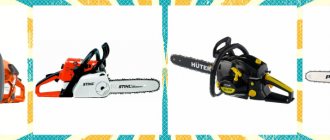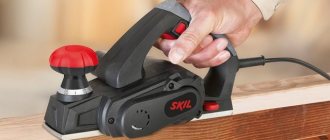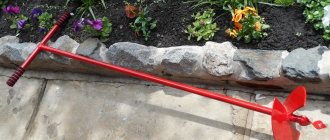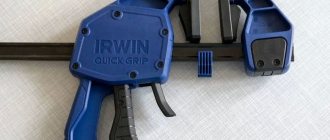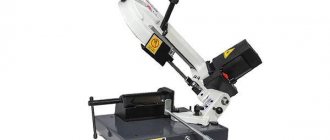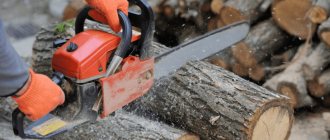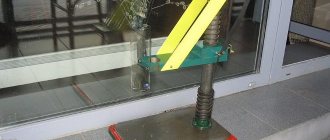Electric planers have become one of the main working tools of builders and craftsmen who work with wood. With the help of this gadget, labor productivity increases significantly. Especially when planing boards or timber. Another distinctive feature over its predecessor is the ability to use it as a machine tool. Today, manufacturers produce several classes of this tool. In particular, amateur, semi-professional and professional. They differ from each other in technical parameters, power and operating time. KP compiled a rating of the best electric planers of 2022, and analyzed in detail the features of each.
Interskol R-110/1100M
The first hero of our TOP is Interskol R-110/1100M. This is an excellent plane, the planing width of which is 110 mm in 1 pass. It has high-speed steel knives, an aluminum alloy platform with high-quality geometry that ensures precision work, and also allows you to adjust the processing depth in the range from 0 to 3 mm. Among the design features of this planer, it is worth noting the V-shaped grooves in the front sole, which facilitate chamfering and the ability to convert the tool into a full-fledged planer. It is also worth noting that the plane has a smooth start and is equipped with a comfortable handle with a rubber pad and controls that fits well in the hand and saves the operator’s strength. Considering that this plane weighs only 4.5 kg, it will be easy to work with even for a long time. It is also worth noting that the planer comes with a spare belt, an adapter for connecting a vacuum cleaner, a spare set of knives and a device for straightening them. Those who have already acquired such a tool speak mostly positively about it, noting the good quality of workpiece processing, reliability, ease of use and affordable cost. For home use and small-scale work, such an electric planer will be just right.
- Nom. power: 1100 W.
- Plunge rotation: 16000 rpm.
- Planing width: 110 mm.
- Planing depth: 0 – 3 mm.
- Smooth start.
- Starting current limitation.
- Weight: 4.5 kg.
How to choose an electric planer
When choosing an electric planer, do not forget that even it does not last forever. Sooner or later you will have to change it, which means buying spare parts. Some of them are universal. But not all. Will purchasing them be a problem? Selection parameters for the TOP-15:
- Application area;
- Power;
- Blade width;
- Sole dimensions;
- Thickness of chips removed;
- Drum rotation speed;
- Type of knives;
- Design;
- Planer weight;
- Cord length;
- Additional accessories;
- Safety.
The range of prices and capabilities of woodworking tools for planing is very wide. Before choosing, you need to answer a few questions: How often will you need to use the tool? What types of work will they perform? What is the volume and load?
Interskol R-82/710
Next we have Interskol R-82/710. This is a fairly simple and inexpensive plane, which nevertheless copes well with hardwood processing. It is equipped with a 710W motor that provides high rotation speed. The processing width in one pass with such a plane is 82 mm, and the maximum planing depth can reach 2 mm. This plane also has the ability to remove quarters to a depth of up to 15 mm. And it comes complete with a device for stationary use as a planer. Among the advantages of this tool, it is worth noting the high-quality assembly, durable platforms made of aluminum alloy, one of which has a groove that allows you to remove chamfers. It is also worth noting that the plane received a rich set of equipment. In addition to the device for permanent installation, the kit includes spare knives and a belt, a guide ruler and a bag for collecting chips. The latter can be connected to a special pipe on the instrument body. And thanks to him, the workplace will always be clean.
- Nom. power: 710 W.
- Plunge rotation: 14000 rpm.
- Planing width: 82 mm.
- Planing depth: 0 – 2 mm.
- Quarter sampling depth: up to 15 mm.
- Bag for collecting chips.
- Weight: 3.5 kg.
What is it needed for
An electric plane is an analogue of a manual plane. In terms of capabilities, speed and quality, it is many times superior to the manual version.
- Due to the high speed of the knives, it processes wood without the effort of the master, quickly and cleanly, with virtually no scuffing.
- Adjusting the table (knife release) allows you to adjust the desired planing depth.
- Electric planers with a bed can be turned over with the knives up and used as a stationary mini planer.
Well suited for processing workpieces whose width does not exceed the size of knives. For example, an electric planer with 102 or 110 mm knives can efficiently process workpieces up to 102 and 110 mm wide. Knives with a width of 82 mm without steps and transitions will process workpieces only up to 80-82 mm wide.
You can use a handheld electric planer for planing wider surfaces. But at the same time, the appearance of stripes and differences in depth between the places where the knives pass is almost inevitable.
Thicknessers and jointers with a large width of the planing shaft and knives are better suited for planing wide boards.
In this case, a manual electric planer is used for finishing carpentry work on wide surfaces. For example, if, after assembling rough or finishing floors, steps have formed between adjacent boards, they can be removed with a hand-held electric planer, leveling the overall surface.
In a stationary (inverted) position, an indispensable tool for planing small workpieces.
Rebir IE-5708C
Rebir IE-5708C is a planer with a 2150 W motor and an increased service life. It provides accurate and fast rebating to a depth of 17 mm, chamfering and planing of wooden workpieces to a depth of 3.5 mm and a width of 110 mm in 1 pass. This tool is equipped with a “floating” stop, which allows you to place the tool on the work surface without waiting for the cutter to stop completely. It is also notable for its soft start, which allows you to start the plane without loading the belt, the ability to adjust the cutting angle and the ability to install it in a stationary position for more convenient work. This planer ejects chips in two directions. It also has the ability to connect a vacuum cleaner to keep the workplace clean. And to ensure the safety of the worker, this tool is equipped with a lock against accidental activation. As for the complete set of this tool, it includes a device for sharpening knives, a device for installation in a hospital, 2 spare brushes and an adapter for connecting a vacuum cleaner. Owners speak extremely positively about this plane, noting the high-quality assembly, ease of use and ease of planing any wood. In general, if you need a powerful and multifunctional plane, then I recommend paying attention to this model.
- Nom. power: 2150 W.
- Plunge rotation: 15000 rpm.
- Planing width: 110 mm.
- Planing depth: 0 – 3.5 mm.
- Rebate depth: up to 17 mm.
- Smooth start.
- Overload protection.
- Ejection of chips in both directions.
- Weight: 6.9 kg.
Which electric planer is better to buy?
Buying tools is always a responsible matter. Especially when it comes to electric models. Their performance is superior to manual ones, but safety requirements must be special. The power and other technical characteristics of a future purchase must be correlated with the work to be performed. Therefore, even in the recommended list you need to find your suitable model; some recommendations will help with this:
- The Makita KP0800 electric planer is ideal for even hard wood;
- For its advantages, the Black+Decker KW712 model has a very budget price;
- Diold RE-1500-01 will work reliably in any weather conditions;
- Rebir IE-5708M processes 15.5 centimeters of surface in one motion;
- All products after BOSCH GHO 26-82 D Professional look like factory ones;
- Mafell MHU82 T-MAX set is guaranteed German quality for professional work;
- The Makita KP312S will be safe even when connected to ungrounded outlets.
Buying the best electric planers is quite affordable. It's not always about high cost. Sometimes the extensive capabilities of expensive models are simply not needed. There are also quite budget tools with excellent characteristics.
Makita 1911b
The next hero of our TOP is Makita 1911b. This is a powerful electric planer that allows you to plan wooden surfaces to a depth of up to 2 mm, capturing 110 mm of width in one pass, and also allows you to chamfer. It has adjustable blade extension, which makes it possible to choose optimal modes and achieve high quality wood processing, and is equipped with a parallel stop, which guarantees smooth operation of the tool. The advantages of this tool include high-quality assembly and dust protection, which ensures its durability. It is also worth noting the high speed of rotation of the knife, which ensures planing without chipping, and the support sole, which is made of cast aluminum, which increases its strength. Also, it has a long network cable. Therefore, with such a plane you are unlikely to need an extension cord. It is also worth noting that this tool provides the ability to connect a vacuum cleaner to collect sawdust and shavings. So it will keep your workplace clean. This plane weighs 4.2 kg, which allows you to confidently move it over the surface being processed and reduces the force of vibrations. This reduces the rest time of the device and improves the quality of planing.
- Nom. power: 840 W.
- Plunge rotation: 16000 rpm.
- Planing width: 110 mm.
- Planing depth: 0 – 2 mm.
- Double insulation.
- Cable length: 5 m.
- Dimensions: 355 x 160 x 172 mm.
- Weight: 4.2 kg.
Principle of operation
The electric planer does the work by rotating the planing knives, securely fixed in the grooves of the shaft. Rotation from the motor is transmitted through a belt drive or gears of the gearbox. The revolutions on the shaft are higher than the revolutions of the electric motor due to the increased gear ratio: there is a larger pulley on the motor, and a smaller one on the shaft. High speeds allow you to process wood cleanly and work efficiently, even if the knives are slightly dull.
It is impossible to work with completely dull knives, because... this leads to increased loads and, as a consequence, to failure of the engine and drive belt.
Planing depth – from zero, tenths of a millimeter to 2-3 mm. The depth is adjusted using the front table position adjustment knob. It can be recessed relative to the knives, they will protrude more and then the depth of planing increases, and vice versa.
Main characteristics that you should pay attention to when choosing
With almost the same functionality, different models differ in the following main parameters.
Engine power
For shallow planing of workpieces with a width of 82-110 mm (width of knives), high engine power is not required. The engine power on different models ranges from 600-1000 W, and this is quite enough.
The more powerful the engine, the easier it can handle the load without losing speed or overheating. But this plus is offset by minuses: the greater the engine power, the greater the weight of the tool, the cost and energy consumption. Therefore, the most popular models have an average power of 650-800 W.
Power type
Cordless electric planers have the only advantage - the ability to work without an electrical cord and without a nearby power supply. Sometimes this is enough for such a tool to become indispensable. An electric planer with a battery is convenient when you need to plan a small surface area at a site where there is no electricity. At heights, in hard-to-reach places where it is difficult to pull the wire.
It’s rare, but it happens when a cordless electric planer is more convenient in a carpentry workshop. For example, when you have to plan long workpieces, and the power cord gets in the way.
Disadvantages in comparison with network ones:
- lower power, blade speed and planing width;
- higher cost;
- the need to regularly charge batteries.
Planing depth
This figure is comparable on almost all models: from 0 to 2 mm, in rare cases up to 2.5 - 3 mm. For this type of wood processing, this is quite enough.
Finishing is carried out at a minimum depth, from 0.1 to 1 mm.
When it is necessary to significantly reduce the workpiece, to remove excess volume, the knives are released to their full depth. Also, the knives are released completely if the workpiece is wavy. In this case, knives extended by a maximum of 2-3 mm can remove a smaller layer due to the fact that the sole of the electric planer rises on uneven wood when moving along the workpiece.
Since the planing depth on all models is almost the same (from 0 to 2-3 mm), little attention is paid to this factor when choosing.
Type of knives and their width
Knives are an important element, since they are the ones who directly perform the work itself - planing the wood. Knives are characterized by the following points.
Steel
The higher the quality of the alloys and heat treatment (hardening), the better the knives. But when purchasing, it is impossible to determine the quality of knives. Even if the steel grade is indicated: HSS (high-speed cutting), TST (carbide alloys), this does not mean anything to the user until the real work begins. Good knives do not become dull for a long time even when processing hard wood, and vice versa.
Availability of spare kit
A standard set of knives can last the entire life of the plane. However, irreparable damage is possible on any knives. For example, if there is a nail or self-tapping screw in the wood. A gouge will form and planing will leave a streak in the wood.
If the damage is shallow, the knives can be resharpened to remove the damage. If it’s big, it’s no longer possible. They will become low and will not reach the workpiece even when fully released.
You need to know that all knives need to be sharpened and then balanced by weight. Otherwise, due to the difference in weight, the shaft will rotate like an eccentric. At high speeds this is fraught with strong vibration, beating and destruction of the shaft bearings.
Therefore, it is better if the kit includes spare knives.
Knife straightening clamp
It’s good if the kit includes a clamp for straightening knives. It is difficult to professionally sharpen knives at home without changing the weight and imbalance. But it is quite possible to refill slightly dull ones. The knife is clamped into a truing clamp, which sets a certain sharpening angle. By lightly rubbing a fine abrasive with water, the knives can be restored to their factory sharpness.
Width
Three main standards have been adopted for the width of knives - 82 mm, 100 mm and 110 mm. Ideally, the width of the processed plane should be less than the width of the knives, so that during a double pass there are no differences in height. That is, it is better to plan timber with a cross-section of 100 mm using knives 100-110 mm wide, but not 82 mm. Therefore, the width of the knives is chosen based on the size of the workpieces that are planned to be processed.
The shape of knives and their sharpening
Knives can be straight or rounded at the ends. The second option leaves fewer steps when passing wide planes. For example, when a board 200 mm wide is planed with a knife width of 82-110 mm. At the same time, the roundness reduces the working width of the knives by several mm.
Sharpening knives can be either straight at a certain angle (about 45 degrees), or semicircular, concave. Knives with a semicircular concave sharpening become dull more slowly. When the tip of the tip is abraded, a further part of the knife comes into operation, which, by definition, is much thinner and sharper than that of straight-sharpened knives.
The disadvantage of concave semicircular sharpening is that on the working side they can only be sharpened on special machines with an abrasive wheel of suitable diameter. The disadvantage is small, since such a knife can be threaded in the usual way from the working side using a thin abrasive, or sharpened from the reverse plane on a conventional surface grinder.
Sometimes in sets and separately sold there are special figured knives with a shallow profile. They are selected to give the desired relief to the workpiece.
Double sided knives
Knives can have single or double-sided sharpening. If one side becomes dull or damaged, double-sided knives can be turned over and the sharp side used. Thus, double-sided knives are equivalent to a second spare set of single-sided knives.
Double-sided sharpening is not found on all models. Due to the peculiarities of the fastening and the location of the fastening holes in the knives, it is not always possible to turn them over so that they fit into the fastenings from either side. On models where the design of the knife mounting allows them to be turned over, as a rule, the sharpening is double-sided.
Maximum number of revolutions
An important point is that the higher the speed of the shaft with knives, the cleaner the processing, the less scuffing on the wood. In this case, the more revolutions, the higher the gear ratio and the less power when the shaft rotates. (Similar to 3rd and 4th gear in a car). If the characteristics indicate a record number of revolutions, this may have two negative sides:
- The shaft rotates quickly, but with little force, the engine will lose speed and overheat during operation.
- Only high-quality special bearings can withstand the highest speeds, for example, 15,000 - 20,000 rpm. If such speeds are indicated on a cheap budget model, this is either a marketing ploy, or the unit will quickly fail due to engine overload or bearing failure.
For high-quality processing of wood with a manual electric planer, 8000-12000 rpm is quite enough. Anything higher is better, but may have the disadvantages described above.
Smooth start
When starting any electric motor, current is consumed that is 3 times the motor rating. Therefore, the voltage drops in the network at the moment of starting a sufficiently powerful engine. The soft start system allows you to avoid this. It also ensures smooth starting.
Speed support under load
Modern electronic systems allow you to adjust the current depending on the load. With such a system, the plane loses less speed under increased load, for example, on branches or hard wood. A drop in speed leads to scuffing of wood, engine stalling, and even failure. The system allows you to avoid this.
Tool weight
It is more convenient to work with a light electric planer. But too light a weight may mean a lack of safety margin in all parts, although not always to a certain extent.
For example, Makita models are lightweight due to the well-thought-out design of every detail by Japanese engineers. Expensive alloys of magnesium and aluminum can lighten the weight, while cheap ferrous metals, on the contrary, make it heavier.
When working, the electric planer is rarely held by hand; as a rule, it is located horizontally on the workpiece. Here weight can play a positive side - the instrument is pressed with its own weight, there is no need to put undue pressure on it with your hands.
A lightweight electric planer is better suited for working with vertical and diagonal surfaces.
Therefore, weight ultimately does not fundamentally determine the quality of the model.
Equipment
The standard equipment of the electric planer includes:
- Stand for stationary installation with knives up.
- Screws with plastic heads for fixing the plane in the bed.
- Protective spring-loaded bar that covers the knives during stationary operation.
- Guide bar.
- Socket wrench for fastening knives.
- Template for setting knives in depth.
- User manual.
The extended configuration can additionally be supplied with:
- Spare knives.
- Knife straightening clamp.
- Spare graphite brushes for the electric motor.
If the model is not designed to work in a stationary (inverted) mode, the frame and mountings for it are not supplied.
